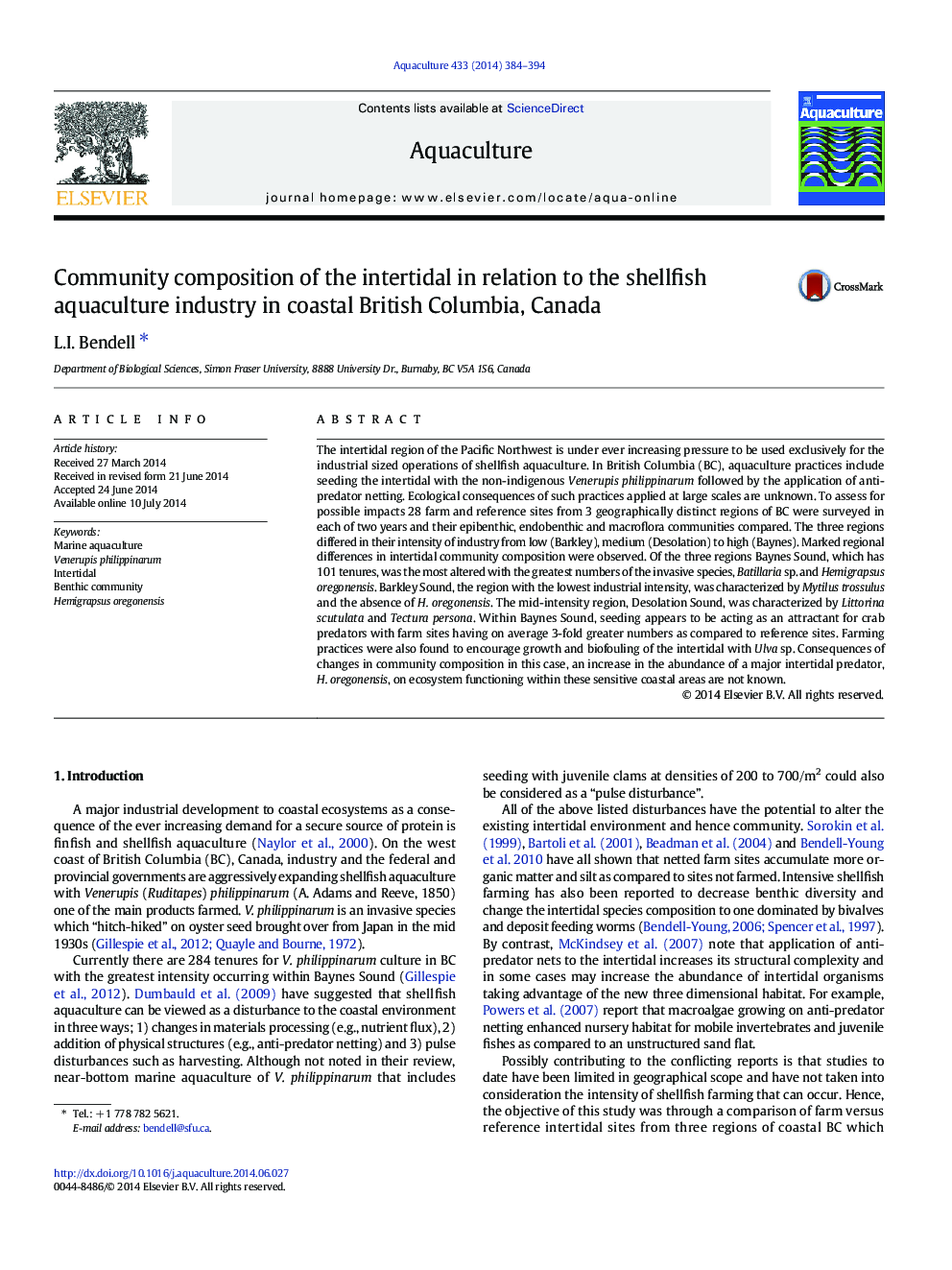| کد مقاله | کد نشریه | سال انتشار | مقاله انگلیسی | نسخه تمام متن |
|---|---|---|---|---|
| 2421915 | 1552854 | 2014 | 11 صفحه PDF | دانلود رایگان |
• The intertidal of the Pacific Northwest is being developed for shellfish aquaculture.
• Aquaculture farming practices are acting as an attractant for crab predators.
• Farming practices encourage growth and biofouling of the intertidal with Ulva sp.
• Consequences of such changes in community composition are not known.
The intertidal region of the Pacific Northwest is under ever increasing pressure to be used exclusively for the industrial sized operations of shellfish aquaculture. In British Columbia (BC), aquaculture practices include seeding the intertidal with the non-indigenous Venerupis philippinarum followed by the application of anti-predator netting. Ecological consequences of such practices applied at large scales are unknown. To assess for possible impacts 28 farm and reference sites from 3 geographically distinct regions of BC were surveyed in each of two years and their epibenthic, endobenthic and macroflora communities compared. The three regions differed in their intensity of industry from low (Barkley), medium (Desolation) to high (Baynes). Marked regional differences in intertidal community composition were observed. Of the three regions Baynes Sound, which has 101 tenures, was the most altered with the greatest numbers of the invasive species, Batillaria sp. and Hemigrapsus oregonensis. Barkley Sound, the region with the lowest industrial intensity, was characterized by Mytilus trossulus and the absence of H. oregonensis. The mid-intensity region, Desolation Sound, was characterized by Littorina scutulata and Tectura persona. Within Baynes Sound, seeding appears to be acting as an attractant for crab predators with farm sites having on average 3-fold greater numbers as compared to reference sites. Farming practices were also found to encourage growth and biofouling of the intertidal with Ulva sp. Consequences of changes in community composition in this case, an increase in the abundance of a major intertidal predator, H. oregonensis, on ecosystem functioning within these sensitive coastal areas are not known.
Journal: Aquaculture - Volume 433, 20 September 2014, Pages 384–394
